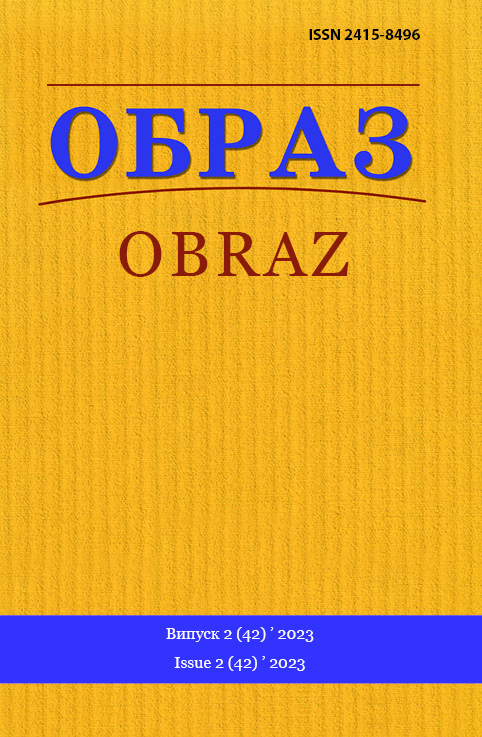Анотація
Стаття присвячена дослідженню методологічної взаємодії медіа та психоаналізу. Методологічна інтеграція медіа та психоаналізу потрактована з позицій комунікативного психоаналізу, розмовотерапії, поглибленого особистого інтерв’ювання. Зазначено, що медіатехнології актуалізують процеси пізнання, самоосмислення й ревізії багатьох категорій, що часто потрапляють у фокус медійних зацікавлень, – ідентичність, символ, архетип, стереотип, страх, тривога, комплекс, проблема, травма. Використання прийомів інтерв’ю, діалогу, полілогу, бесіди, виговорення, публічних та анонімних виступів, вільного асоціювання, наративів про інших, висвітлення подій засобами фотомистецтва, кіно, аудіо, відео та текстового повідомлення, радіо, телебачення, інтернету забезпечують виявлення больових точок індивіда та груп, соціуму чи нації в цілому.
Посилання
1. Bidiuk, O. (2009), “Psychoanalysis in the system of modern communication technologies”, Naukovi Zapysky Natsionalnoho Universytetu «Ostrozka akademiia». Seriia : Kultura i Sotsialni Komunikatsii [Scientific Notes of the National University «Ostroh Academy». Series: Culture and Social Communications], vol. 1, pp. 13–20.
2. Vertel, A. (2015), Philosophy of Psychoanalysis, Publishing House of the Sumy DPU named after A. S. Makarenko, Sumy, 208 р.
3. Zborovska, N. (2003), Psychoanalysis and Literary Studies, Akademvydav, Kyiv, 392 р.
4. Konstantiuk, V. (2020), “Freud and Lacan as Media Theorists or What Media Can Say About Psychoanalysis and Psychoanalysis – About Media”, Topos, vol. 3, pр. 189–205.
5. Kosheliuk, O. (2013), “Communicative Psychoanalysis as Media Technology”, Derzhava ta Rehiony. Seriia: Sotsialni Komunikatsii [State and Regions. Series: Social Communications], vol. 2, pp. 16–20.
6. Kuznetsova, O. (2017), “Psychological triggers in the media: concept, characteristic, types, opposition to their influence”, Visnyk Natsionalnoho Universytetu «Lvivska politekhnika». Seriia: Zhurnalistski Nauky [Bulletin of the Lviv Polytechnic National University. Series: Journalistic Sciences], no. 883, pp. 33–38.
7. Laplansh, ZH. (1996), Dictionary of Psychoanalysis, Higher School, Moscow, 623 p.
8. Psychological Encyclopedia (2006), (Ed.) O. Stepanov, Akademvydav, Kyiv, 424 p.
9. Rosinska, Z. (2008), “Self-identity of the recipient. Psychoanalytic points of view”, in D. Ulytska (Eds.), Literature. Theory. Methodology, publishing house “Kyiv-Mohyla Academy”, Kyiv, 543 р.
10. Froid, Z. (1998), Introduction to Psychoanalysis, Basics (Osnovy), Kyiv, 709 р.
11. Derrida, J. & Mehlman, J. (1972), Freud and the Scene of Writing, Yale French Studies, no. 48, pp. 74–117, available at: https://www.scribd.com/document/198444613/Derrida-Freud-and-theScene-of-Writing#.
12. Doane, M.A. (2002), Emergence of Cinematic Time. Modernity, Contingency, the Archive, Cambridge : Harvard University Press, 289 p.
13. Emmert-Streib, F., Yli-Harja, O., & Dehmer, M. (2019), “Utilizing social media data for psychoanalysis to study human personality”, Front Psychol, no. 15. available at : https://www. frontiersin.org/articles/10.3389/fpsyg.2019.02596/full.
14. Elsaesser, T. (2009), “Freud as media theorist: mystic writing-pads and the matter of memory”, Screen, no. 50 (1), pр. 100–113.
15. Highmore, B. (2007), “Michel de certeau and the possibilites of psychoanalytic cultural studies”, Culture and the unconscious, Basingstoke, Palgrave Macmillan, рр. 88–101.
16. Hollway, W. & Jefferson, T. (2000), Doing Qualitative Research Differently. Free Association, Narrative and the Interview Method, London, Sage, 166 р.
17. Johanssen, J. (2021), Psychoanalysis and Digital Culture: Audiences, Social Media, and Big Data, London, Routledge, 216 р.
18. Johanssen, J. (2018), “Towards a Psychoanalytic Concept of Affective-Digital Labour”, Media and Communication, no. 6 (3), pp. 22–29, available at: https://doi.org/10.17645/mac.v6i3.1424.
19. Johanssen, J. (2016), “Media Research and Psychoanalysis: A Suggestion”, International Communication Gazette, no. 78 (7), pp. 688–693, available at : https://doi. org/10.1177/1748048516655730.
20. Kittler, F. & Friedrich, A. (1997), “The World of the Symbolic – A World of the Machine”, (Ed.) John Johnston in : Literature, Media, Information Systems, London and New York, Routledge, pp. 130–146, available at: https://monoskop.org/images/2/2d/Kittler_Friedrich_1997_The_World_of_ the_Symbolic-A_World_of_the_Machine.pdf.
21. Lacan, J. (1991), The Seminar of Jacques Lacan. Book II: The Ego in Freud’s Theory and in the Technique of Psychoanalysis 1954–1955, (Ed.) Jacques-Alain Miller, trans. Sylvana Tomaselli, London and New York, W.W. Norton & Company, 284 p.
22. Meek, A. (2010), Trauma and Media: Theories, Histories, and Images, New York, Routledge, 232 p.
23. Meek, A. (2016), “Media traumatization, symbolic wounds and digital culture”, Communication and Media, no. 11 (38), pp. 91–110.

Ця робота ліцензується відповідно до ліцензії Creative Commons Attribution 4.0 International License.

